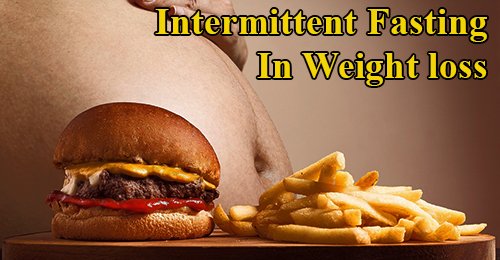![]()
![]()
![]()
![]()

Embarking on a weight loss journey can be both exciting and challenging, and if you’ve been exploring different approaches, you might have come across the term “intermittent fasting diet plan.” In this comprehensive guide, we’ll delve into the world of intermittent fasting, exploring how this unique eating pattern can be a powerful tool in your quest to shed pounds and bid farewell to stubborn belly fat. Let’s unravel the secrets behind intermittent fasting and understand how it can truly transform your body.
Intermittent fasting is not about restricting what you eat but rather when you eat. It involves cycling between periods of eating and fasting. The primary goal is to create an eating pattern that maximizes the body’s natural fat-burning abilities.
During the fasting period, your body depletes its glycogen stores and starts burning stored fat for energy. This metabolic shift can contribute to weight loss, making intermittent fasting an intriguing approach for those looking to shed excess pounds, including stubborn belly fat.
This method involves fasting for 16 hours each day and restricting your eating window to 8 hours. For example, you might eat between 12:00 pm and 8:00 pm and fast from 8:00 pm to 12:00 pm the next day.
In this approach, you consume a regular diet five days a week and limit your calorie intake to around 500-600 calories on the remaining two non-consecutive days.
This method involves a 24-hour fast once or twice a week. For instance, if you finish dinner at 7:00 pm, you wouldn’t eat again until 7:00 pm the next day.
Click image to learn more about eat stop eat

As the name suggests, this method involves alternating between days of regular eating and days of fasting or consuming very few calories.
Intermittent fasting often leads to a natural reduction in calorie intake. By condensing your eating window, you may find it easier to consume fewer calories without the need for strict dieting.
During the fasting period, the body shifts into fat-burning mode. This can lead to a more significant loss of stored fat, including the stubborn belly fat that often seems resistant to traditional weight loss methods.
Intermittent fasting may enhance metabolic health by improving insulin sensitivity and promoting the release of growth hormone. A more efficient metabolism contributes to effective weight loss.
Research suggests that intermittent fasting may specifically target visceral fat—the fat stored around internal organs, including the belly. This type of fat is linked to various health issues, and reducing it can be crucial for overall well-being.
Intermittent fasting influences hormones related to fat storage and metabolism, such as insulin and norepinephrine. These hormonal changes contribute to the breakdown of stored fat, particularly around the abdominal region.
Chronic inflammation is associated with weight gain and difficulty losing belly fat. Intermittent fasting has been shown to reduce inflammation, creating a more favorable environment for weight loss.
If you’re new to intermittent fasting, consider starting gradually. Begin with a 12-hour fasting window and slowly extend it over time as your body adjusts.
During fasting periods, staying hydrated is crucial. Drink plenty of water, herbal teas, and black coffee to support your body’s functions and curb hunger.
When breaking your fast, opt for nutrient-dense, whole foods. Incorporate a balance of lean proteins, healthy fats, and complex carbohydrates to nourish your body.
Intermittent fasting should enhance, not compromise, your well-being. Pay attention to your body’s signals, and if you experience adverse effects, consider adjusting your approach or consulting a healthcare professional.

John, a busy professional, struggled with belly fat for years. Implementing a 16/8 intermittent fasting plan allowed him to regain control of his eating habits, leading to a noticeable reduction in belly fat over several months.
Sarah, a mother of two, embraced intermittent fasting with the 5:2 method. By incorporating fasting days into her routine, she experienced steady weight loss, particularly around her midsection.
While intermittent fasting can contribute to weight loss on its own, combining it with regular exercise amplifies the benefits. Include both cardiovascular exercises and strength training to maximize results.
Consider scheduling your workouts during your eating window. This can help optimize energy levels and promote muscle preservation during fasting periods.
Intermittent fasting, when approached mindfully, can be a powerful tool for weight loss and targeting stubborn belly fat. Whether you choose the 16/8 method, 5:2 diet, or another approach, consistency is key. Remember, intermittent fasting is not one-size-fits-all, and it’s essential to find an approach that aligns with your lifestyle and preferences. As you embark on this journey, celebrate small victories, stay patient, and relish the positive changes happening within your body. Click below to explore more about intermittent fasting diet plans and kickstart your transformation towards a healthier, more confident you.